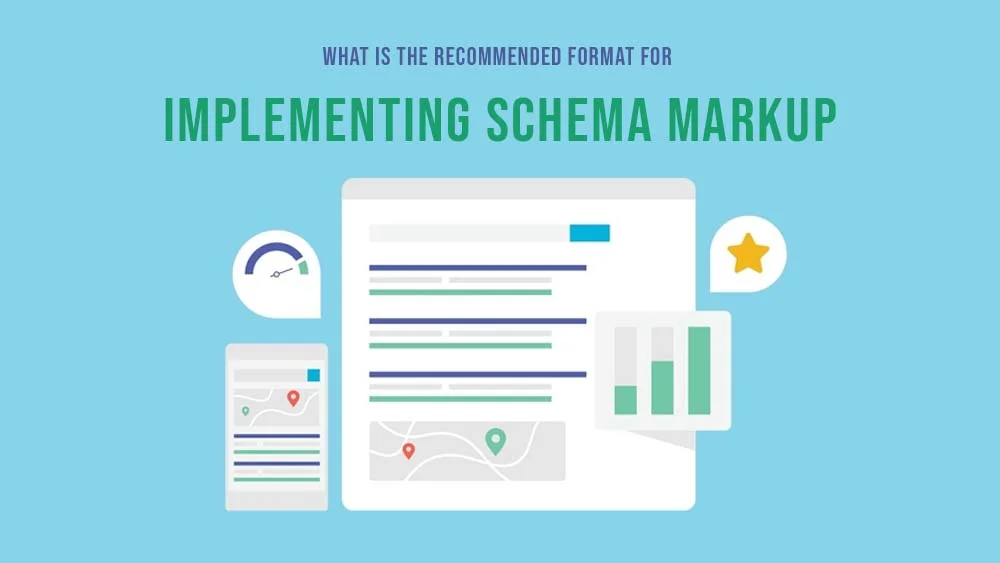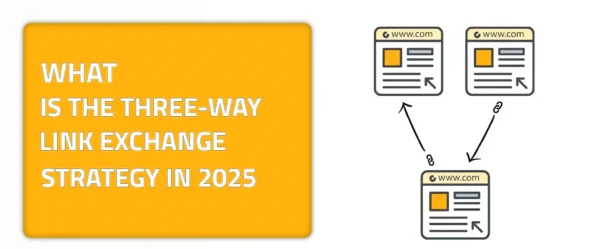A Q&A Guide: What is the Recommended Format for Implementing Schema Markup?
In today’s digital SEO landscape, which is volatile with new opportunities each and every day, there is a question that people often ask. The question that often arises is, “What is the recommended format for implementing Schema Markup?” Staying ahead of all that’s new and running requires that you understand all of the tools that are available to you. One such tool that has gained prominence is Schema Markup, a powerful semantic vocabulary that helps search engines better understand the content on your website.
As websites become more complex and diverse, implementing schema markup becomes crucial for enhancing visibility and providing a richer search experience for users. This article provides a clear and concise explanation of Schema Markup execution, offering a step-by-step guide on how to optimize its effectiveness. From fundamental principles to sophisticated strategies, we will delve into the best practices and pitfalls, guaranteeing that your internet presence not only meets the criteria established by engines like Google but also distinguishes itself in the competitive digital realm.
Whether you have experience in SEO or are new to it, knowing the proper way to use Schema Markup is crucial for boosting your search rankings and making your content more engaging and informative. Come along on this journey of Schema Markup deployment, where we uncover the most effective strategies to enhance your online presence and interaction with users.
What is the Recommended Format for Implementing Schema Markup? What Is Schema Markup In SEO?
Understanding data is something that we have to make it easier or facilitate it for search engines. That is why there are elements that SEO professionals need to understand. That is, in order to execute a successful strategy for themselves. Schema markup is one of those elements that play a critical role in enhancing the way search engines present and understand the information given to them or data that they receive. Essentially, it’s a type of semantic code that website owners include in their HTML to offer search engines more context regarding the content on their pages. That is what a schema markup is, in a simple way.
This is an element that acts as guidance for search engines. It is a data markup structure that assists search engines in delivering search results that are informative and visually appealing. That is with the help of rich snippets of course. Rich snippets are improved search results that give you more information than just meta tags. Schema markups are structured data that is added to HTML to help search engines understand content. They work together to let search engines show rich snippets that include information like prices, scores, and reviews. This stylistic improvement not only gets people’s attention, but it also makes search results more relevant and useful, which improves the whole user experience.
Key Advantages of Schema Markups
One of the key advantages of schema markup lies in its ability to categorize content, enabling search engines to comprehend the relationships between different elements on a webpage. This, in turn, enhances the accuracy and relevance of search results. By implementing schema markup, businesses can optimize their online presence and improve the chances of featuring their content prominently in search results.
As search engines continually evolve to prioritize user experience, understanding and leveraging schema markup has become a fundamental aspect of modern SEO strategies, allowing websites to communicate effectively with search algorithms and, ultimately, enhancing their visibility and performance in the digital landscape. This is something that will help your website gain more traffic through better visibility and exposure. Enhancing your website’s click-through rate will eventually lead to search engines ranking your website at the top of your visitors search pages.
The Many Types of Schema Markups
In order to understand schema markups and know how to implement them efficiently, you have to understand the many types that they have. There are seven main types that I will be covering for you in today’s guide. Let us explore them all in order to have a better understanding of this rich topic.
What is the Recommended Format for Implementing Schema Markup? The Webpage Type
Okay, so now we’re covering the simplest type of schema markup. You can implement it easily, as it is the same markup that you will have across your entire web page. Additionally, you don’t need to have it updated or need any kinds of updates for it to work efficiently. The WebPage type has the aim of helping search engine crawlers understand that your page is a website or webpage. Moreover, it provides them with more data and information about your page that will help with your visibility. People use this markup frequently in conjunction with other markups, such as the BreadcrumbList markup, which is the following item on our types of schema markups list.
BreadcrumbList
This is a type that is best described as a structured data type. It is used to enhance the way of presenting breadcrumb navigation on web pages in general. Breadcrumbs offer a hierarchical trail that showcases the user’s journey from the homepage to their present page. The BreadcrumbList schema assists search engines in interpreting the navigation structure.
Moreover, it helps in enhancing site comprehension and potentially impacting search results. Through the implementation of this markup, webmasters have the ability to improve user experience and ensure that search engines can easily comprehend their website’s structure. This ultimately leads to increased visibility and structure in search engine results pages.
Organization Schema Markup
Organization schema markup is one that is similar to the type of webpage. The similarity here lies in the simplicity of implementation and the fact that you don’t have to update this markup after implementing it once on your webpage. You employ Organization schema markup to furnish search engines with details about your organization. Something that enables them to establish connections and incorporate the information into results, like the Google knowledge panel.
Include comprehensive information about your organization on your webpage, and take it from me as advice or a suggestion. Integrate links to your social media profiles, along with any available contact details, on your website. This will ensure a more robust and strong online presence and enhance the visibility and accessibility of your organization across various platforms.
WebSite Markups
I know that the word “search” is always related to search engines. However, searches can simply lie in the fact that your website users or visitors can actually use your search box. They can use it to search for anything that is related to your website’s content, its services, or its products.
Implementing this type would be worthwhile for you if you have an option on your website that supports in-page search. When you implement the WebSite type into your plan and implement it alongside the SearchAction, you are guaranteed to get or gain search results that will lead directly to your sitelinks search box.
Article Schema Markup
The article markup type targets, as the name says, webpages that have articles posted on them. It is worth trying to implement it. By utilizing this markup, you can offer search engines more information about each article. Something that will give search engines data that personalizes and helps in tailoring the SERPs. This type of markup will increase the chances of additional details being displayed in the search results.
Additionally, it could lead to a more captivating headline, publication date, or images. It’s worth mentioning that the presentation of this markup differs depending on whether you’re using it on a regular web page or an AMP (Accelerated Mobile Pages) page.
BlogPosting
BlogPosting is similar and has a close relationship with the markup type that is mentioned above. Article and BlogPosting markups are way more similar than you think. They both kind of serve the same aim and goal for webpages that have articles and blogs. If you are someone who has a blog on your website, this could be a great idea and method for you to implement. That is, in order for search engines to gather and have more information regarding your blog posts and have better exposure and search engine rankings through BlogPosting.
FAQPage: A Marvelous Schema Markup Type
This specific schema markup type aims to optimize and structure FAQs content, which is also known as a frequently asked question on a certain webpage. When you implement this schema, you are providing search engines with data that is clear about the questions and answers that you have on your webpage. This structured data helps search engines display rich snippets that are present in search results.
This is something that showcases precise Q&A formats with relevant data and details. Informative search results benefit users by providing them with more tailored outcomes that display for them what they need to know. On the other hand, websites gain better visibility and exposure through such optimization. By implementing the FAQPage schema markup, users can enjoy an improved experience as it makes FAQ content more accessible, organized, and prominently displayed in search engine results.
What is the Recommended Format for Implementing Schema Markup?
This is the million-dollar question that we’ve all been seeking an answer to. Let me tell you what is the recommended format for implementing schema markup and how you can do it efficiently. For those of you who are familiar with schema markups, the best format and method of encoding linked data that you can use is JSON-LD.
JSON-LD, which stands for JavaScript Object Notation for Linked Data, is a format that you can describe as a lightweight data interchange. It is commonly used for organizing data and structuring it on the web. This is one method that makes it easier and more simple to embed structured data, such as schema markup, into web pages.
When it comes to adding structured data to webpages, JSON-LD is the standard of choice. That is, since, in contrast to other forms, it is simple for machines to generate and understand. One of its most significant advantages is that it is easy to use and is compatible with JavaScript. This makes it possible to enhance site content in a smooth manner, which in turn improves its exposure in search engine results.
Wrapping It Up on Our “What is the Recommended Format for Implementing Schema Markup?” Guide
I hope this guide helped you understand my simple answer to the question: What is the recommended format for implementing schema markup? Additionally, I hope that by now you know the types and when to implement each one of them depending on your needs and what suits your website or web page. Schema markup has proven itself to be indispensable in SEO strategies.
That is because, as I mentioned above, it provides a structured language that conveys information clearly for search engines. Its various types enable websites to enhance content visibility and user experience. By implementing schema markup, not only are search results optimized, but a more meaningful and ordered representation of site content is fostered, which eventually contributes to improved internet visibility and engagement.











